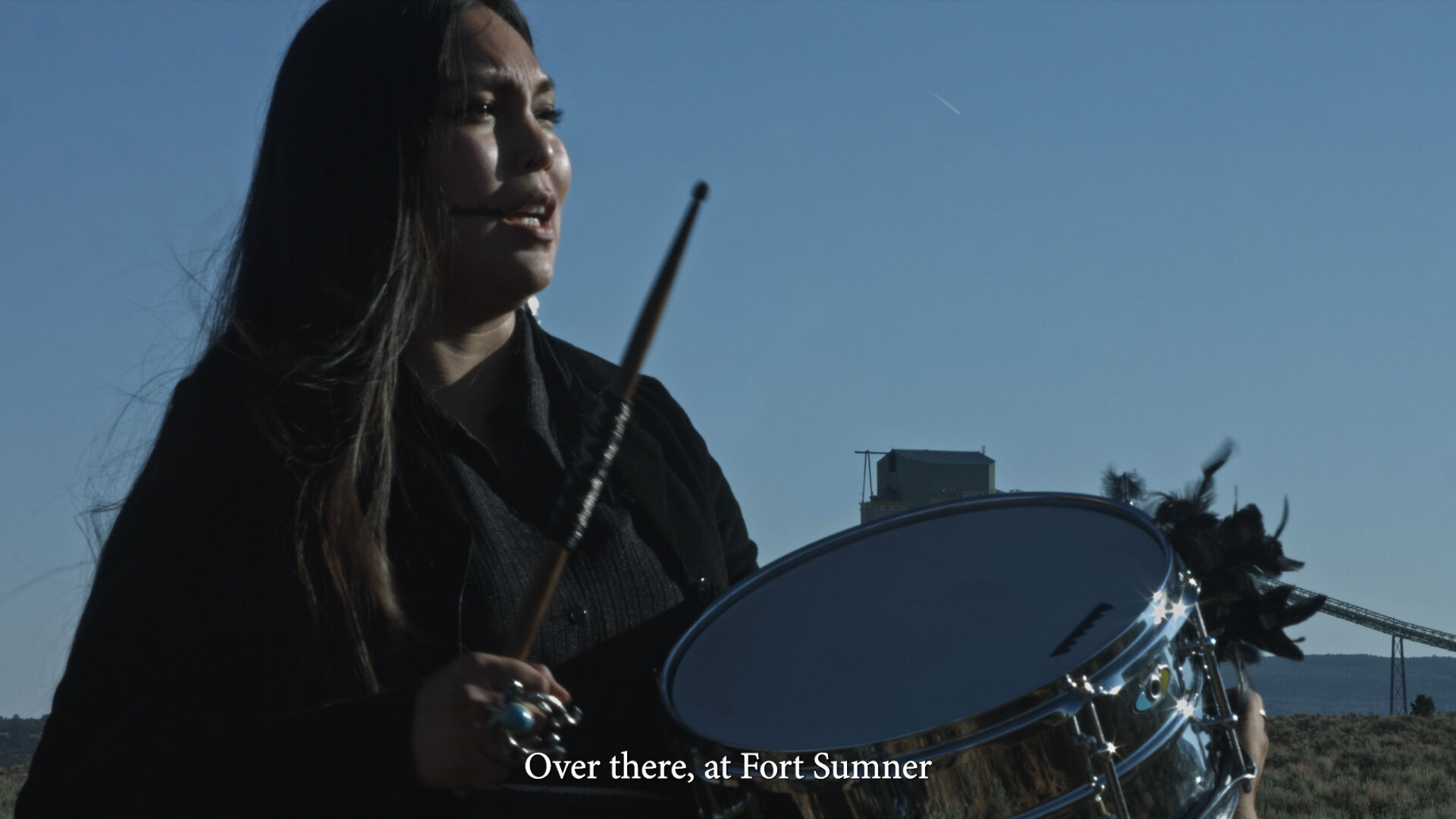Whitney Biennial 2022: Quiet as It’s Kept | Art & Artists
Apr 6–Oct 16, 2022
Whitney Biennial 2022: Quiet as It’s Kept | Art & Artists
Raven Chacon
11
Performances
Learn more
Floor 6 and 95 Horatio Street
Born 1977 in Fort Defiance, Navajo Nation
Lives in Albuquerque, NM
Diné
In this series of three videos, American Indian women sing the history of a landscape, including its present, past, and future, where a conflict, displacement, or massacre of their tribe took place. The songs reference the Navajo Long Walk, the Trail of Tears and resulting drownings in the Arkansas and Mississippi Rivers, and the removal of the Seminole people from their homelands. As Chacon has noted: “These songs of resistance, with only a snare drum as accompaniment, become a sonic testimony, an acknowledgement of shared survival, and a healing call in their mother tongues.”
Chacon's Silent Choir (Standing Rock) is presented at 95 Horatio Street, across the street from the Whitney.
Three Songs, 2021
-
0:00
Billboard: Raven Chacon, Silent Choir
0:00
Raven Chacon: Silent Choir, both in the audio form and the photograph form, were never intended to be an artwork. I went to the Standing Rock Reservation during the #NoDAPL water protection that was happening in 2016. And I came as a guest, as another American Indian trapped in this country who wanted to understand what was happening in this place. At the same time, be another presence, another witness to this as well, but mostly watching and listening.
You would hear noises, you would hear helicopters in the sky. You would hear people singing through the night and then you would hear big instances of silence as well.
Narrator: The recorded sounds from this moment are on the sixth floor of the Biennial inside the Whitney Museum.
On the Sunday after Thanksgiving, the elder women of the encampment led a silent resistance on the bridge that connects the reservation to Bismarck, North Dakota. They faced state police and DAPL—or, Dakota Access Pipeline—security.
Raven Chacon: Led by these women, this group of people came onto the bridge and just stared at the police. And didn’t say a word. No yelling, no pleading, nothing. Just staring. And so, what I was able to capture was the sound of five or six hundred people just being absolutely silent and staring at the police. In retrospect, when I went home and listened to the recording, I could feel the power of those bodies, of those people, American Indian people and allies confronting and having to not say a word.
Narrator: Installed at second-story height across from the southern tip of the High Line, the image appears to recreate this scene here in New York City.
Raven Chacon: Even though I had not intended this image to become an artwork, let’s say, I’m grateful that the curators had seen that this was a transposable image, as if police would barricade off the Highline. One might find themselves on that side of such a situation.
So, to be able to see that these images or these point of view photos could be transposed in your own home, I think can be a very powerful experience.
-
0:00
Raven Chacon, For Zitkála-Šá series
0:00
Raven Chacon: I’m Raven Chacon. I’m a composer and artist based in Albuquerque, New Mexico.
The project is thirteen scores dedicated to contemporary Indigenous women musicians and sound artists and composers.
The scores then took on a bit of a portraiture form in thinking about the work that each of these women make. And so, some of them might use Western notation: clefs, and note heads, and staff lines. Others might incorporate more of the tribal geometries that these women are from. And others are other kinds of symbology, other kinds of maybe mathematical or numerological symbols. Other kinds of maybe ambiguous designs that can take on both sonic meanings, but also meanings of world view. Maybe of landscape, maybe the cardinal directions of the earth.
One of my favorite ones of the series is the one I wrote for a violinist who’s an Alaska native. Iñupiat musician named Heidi Senungetuk. And Heidi is one of the women that I wrote for that does have a classical music background and has that kind of training. And so, that score uses the staff lines and five line staff and system to make a kind of subversion of that notation. And the way that score works is one has an opportunity to compose a melody onto a traditional staff line, but you see the subsequent lines are misshapen. In fact, some of them look like birds or look like slopes of a hillside, or of a mountain. And one is to then transpose that melody back onto those new staff lines.
They’re all different and they all have meaning, all of these symbols, but at the same time, they’re not totally open to interpretation or expression. In fact, a lot of them are very specific in their instructions. I think they are welcoming.

